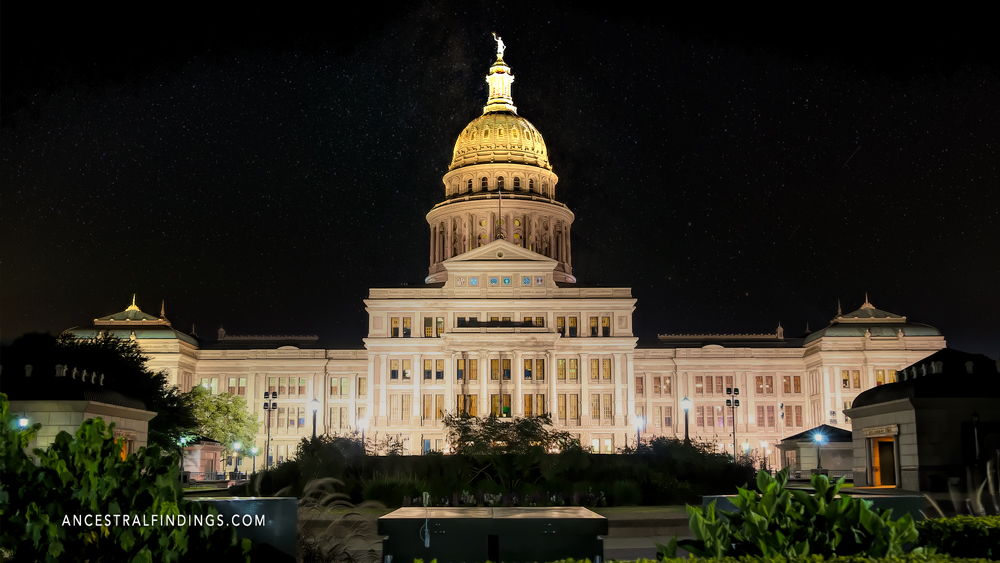Austin is the state capital of Texas. It is the largest city in Travis County, as well as the county seat of that county. Parts of the city go into neighboring Hays and Williamson Counties. It is the fourth most populous city in Texas and the eleventh most populous in the United States. In addition, Austin is the second most populous state capital city in the United States.
The city has a population of about 979,000 people and is considered to be the cultural and economic center of the overall Austin-Round Rock Metropolitan Statistical Area. This statistical area has a population of about 2.2 million people. The city is located in central Texas, in the Texas Hill Country, and includes numerous bodies of water and waterways. It was named the top place to live in the United States in 2017 and 2018 by US News & World Report. It was ranked in 2016 as the top city of the future by Forbes Magazine. This same magazine has also given Austin the honor of being named the second-best city for Millennials in 2017. The website WalletHub named Austin the sixth-best place to live in the United States in 2017. The FBI ranked Austin as the second-safest major US city in 2012. Austin is definitely a city to notice.
When the first known Europeans arrived there, the Tonkawa Native American tribe was the dominant one in the Austin area. The Lipan Apaches and the Comanches also traveled through the area on their hunting and trading expeditions. The Spanish were the first Europeans to arrive in the Austin area in the 1600s but made no permanent settlements there at first. In the early 1700s, a few Spanish Christian missions set up permanent establishments in the Austin area.
American pioneers came to Austin to settle the area in the 1830s. They first set up their homes in the area that is now central Austin, by the Colorado River. This was still technically Spanish territory at the time, but Mexico won its independence from Spain soon after the American pioneers arrived. Texas was part of Mexico’s territory. New settlements were set up after Mexican independence was achieved, but conflict with local Native American tribes kept the area from flourishing for the Americans and Spanish people living there. The people of Texas fought a war to gain their independence from Mexico in 1835, and they won it. Texas was then an independent nation and had its own congress, president, money, and other things an independent nation usually has. Austin was part of this independence.

The Vice-President of Texas visited the area on a hunting expedition in 1837, and after seeing what would be Austin in person, he proposed that Texas’s national capital be moved there from Houston. This was done in 1839, and what is now Austin was incorporated as a city with the name Waterloo. It only kept that name a short while, and then it was changed to Austin to honor Stephen F. Austin, who was considered the “Father of Texas,” and who was also the first Secretary of State of the independent nation of Texas.
There were some conflicts in 1840 between the Texas Rangers and the Comanche Native American tribe. These conflicts pushed the Comanches farther west, away from Austin and the rest of central Texas. Once this was done, American, Spanish, and even Mexican settlement of Texas began in earnest, and the area was soon thriving. Travis County was established in 1840 and became the county home of Austin.
Austin thrived as the new national capital of Texas—at first. Yet, not everyone approved of the remote location of Austin as a national capital. Famously, Sam Houston, who was the first and third president of Texas, wanted to move the capital, and he used incursions by the Mexican Army into San Antonio as an excuse to move it. Unsurprisingly, he moved it back to Houston, named after him. When the Texas congress recessed in 1840, about half the population of Austin had moved to Houston. Other concerns about using Austin as a national capital were its proximity to the displaced Comanches and other Native American tribes, and to Mexico, which still considered Austin (and all of Texas) to be part of its territory, and often tried to assert its perceived rights over the area.
Threats of incursions of Mexican troops to Houston prompted the idea to move the capital to Austin again. In order to keep the capital in Houston, Sam Houston raided the Land Office and kept all of the records there in Houston in what later became known as the Archive War. The people who still lived in Austin wanted the national capital to stay there, and they managed to get the documents from the Land Office back to their city. It was agreed on by all in the government that the documents would stay in Austin, but the national capital moved from Austin to Houston again, and then again from Houston to Washington-on-the-Brazos.
When it was no longer the national capital, the population of Austin declined to only a few hundred people in the early 1840s. Texas’s Congress reconvened in 1845, and it did so in Austin. At that meeting, fourth Texas president Anson Jones and the members of Congress voted to keep the nation’s capital at Austin. It remained so for the rest of the time Texas was an independent nation. When Texas became a US state, Austin was kept as the capital. It is still the state capital today.






